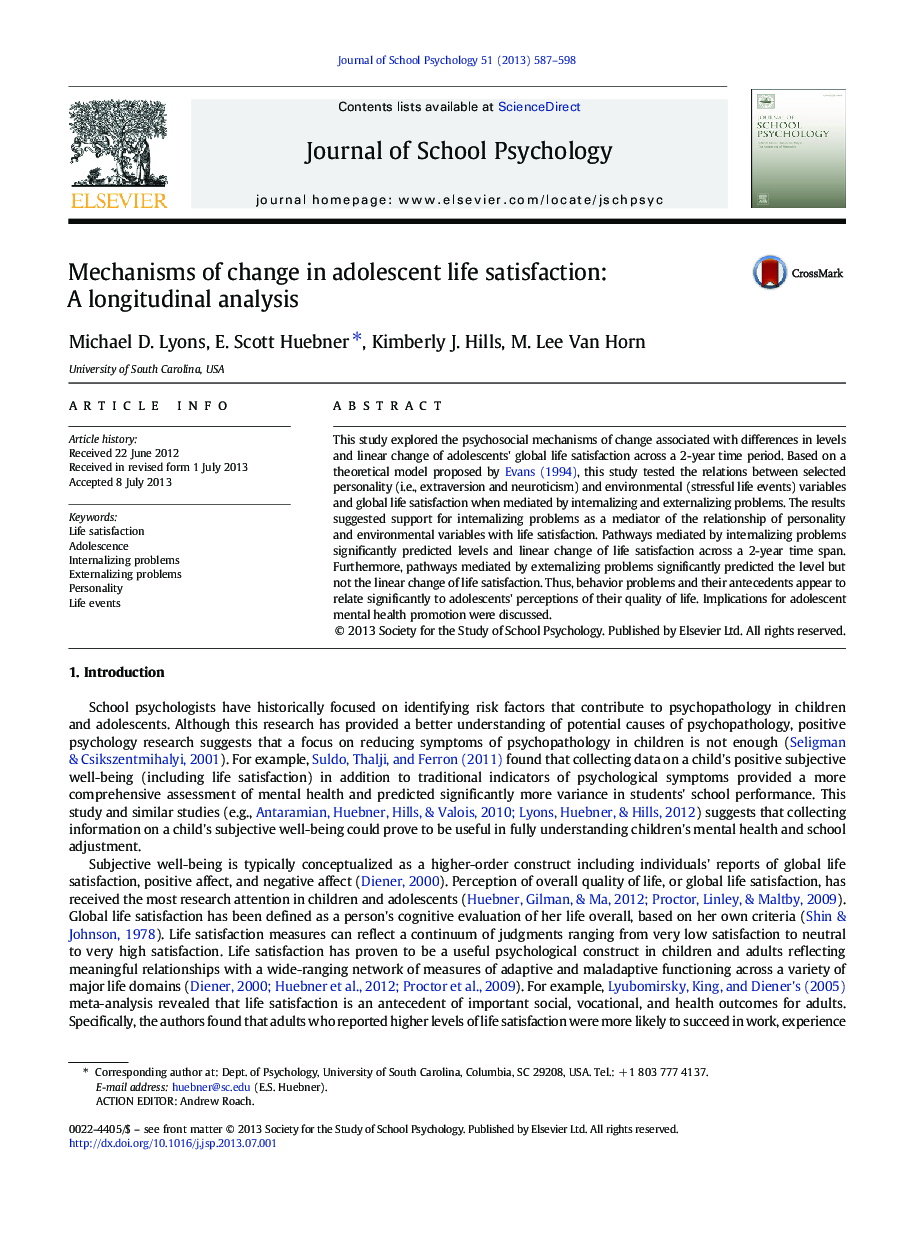| Article ID | Journal | Published Year | Pages | File Type |
|---|---|---|---|---|
| 363611 | Journal of School Psychology | 2013 | 12 Pages |
This study explored the psychosocial mechanisms of change associated with differences in levels and linear change of adolescents' global life satisfaction across a 2-year time period. Based on a theoretical model proposed by Evans (1994), this study tested the relations between selected personality (i.e., extraversion and neuroticism) and environmental (stressful life events) variables and global life satisfaction when mediated by internalizing and externalizing problems. The results suggested support for internalizing problems as a mediator of the relationship of personality and environmental variables with life satisfaction. Pathways mediated by internalizing problems significantly predicted levels and linear change of life satisfaction across a 2-year time span. Furthermore, pathways mediated by externalizing problems significantly predicted the level but not the linear change of life satisfaction. Thus, behavior problems and their antecedents appear to relate significantly to adolescents' perceptions of their quality of life. Implications for adolescent mental health promotion were discussed.
